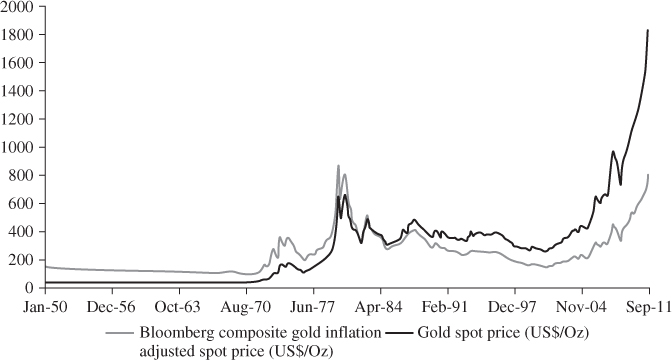19.6 Historical Perspective
Gold has traditionally been the mainstay of reserves, comprising more than 50% of total reserves until the mid-1980s. Subsequently, gold holdings have continuously declined as both a percentage of reserves and also in total amount held as many central banks, particularly since 2000, have disposed of their gold holdings. This was largely due to a greater focus on returns and also falling gold prices since the peak gold price of 1980. In real terms, today's gold price of about $1800 is still roughly about 10% below the 1980 peak (Fig. 19.2).
The trends in reserve management reached a turning point at about the turn of the century. Before the year 2000, most central banks, particularly those of the major industrialized countries (the G-7 if you will), adhered to the “safety” and “liquidity” rule of reserve management. “Return” traditionally followed a far distant third. Several important factors combined in the late 1990s leading to a major shift in reserve management with a greater emphasis on “yield” and investment diversification.
- Rapidly Growing FX Reserves Partially driven by the reaction to the 1997 Asian debt crisis, Asian central banks embarked on an objective of restoring, and increasing their holding of Foreign Exchange reserves. They have succeeded in remarkable manner.
- US Budget Surpluses The US ran ...
Get Handbook of Exchange Rates now with the O’Reilly learning platform.
O’Reilly members experience books, live events, courses curated by job role, and more from O’Reilly and nearly 200 top publishers.


